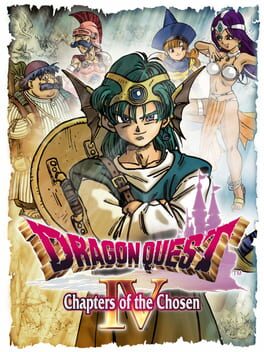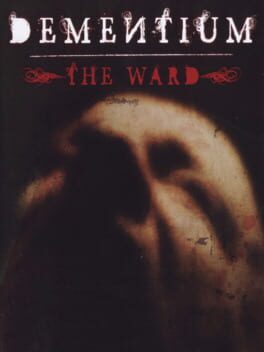full stack of flapjacks 2
they're blueberry
4 Games
had given the boss rush at the end a dry run, but snes9xrx shat itself on my last session and I unfortunately lost at least an hour of progress (last save was right before finishing marahna with northwall still to go). iyellatcloud's review sums it up in his opening line: two mid game segments welded together into something that feels a bit more robust. the platforming sections feel like they have a pretty restrictive toolkit (slash the upper-right quarter of your bounding box + ground slash for a low hitbox) for something in the castlevania mold where the main appeal is matching tools with varied hitbox kinematics to corresponding enemies. bosses are varied but don't do much with overlapping projectiles and generally follow strict AI routines that makes looping rote sets of movement and attack the correct solution. that's for the 25% of bosses I actually bothered fighting anyway; virtually all the rest I mashed the magic that makes stars fall from the sky and just turned the bosses off. only place it feels worth using magic, as it drops only once or twice at most in the levels and you're highly restricted in your usage of it. the action segments sandwich mini-sim sections, where you point the villagers towards monster lairs and wait for them to walk over and seal them. there's nothing to control in terms of what the villagers build on each plot of land so your only real job is to pick off monsters and perform various terraforming like unfreezing tundra or removing trees. fun in a crude clicker way but even six of these segments was probably stretching this concept thin. not really bummed about not beating it; I get the gist, and the whole point was just to set myself up to play quintet's soul blazer/illusion of gaia/terranigma trilogy.
very sweet and more playful than final fantasy but oh my god the combat is on rails. switching the party every chapter for the first half really disrupts the level pacing, as you're always starting from scratch with a minimal set of moves (complained about this previously wrt yakuza 4). once you're assembling the full party it begins to feel like the character archetypes are copied multiple times over. really hard for me to justify this kind of "mash attack, heal when necessary, exploit weaknesses" combat nowadays, this would've worked better back when I rode the bus to school LOL. sad that the most conceptually interesting chapter is torneko the merchant, where the player is tasked with raising enough money to buy a shop and build a connecting bridge between two continents, yet his only combat skill is attacking and the rest of his toolkit revolves around miniscule QoL features I rarely ever used (such as checking how much treasure remains on a floor). I do think the world itself is characterized strongly through each different region/continent getting its own story through an inhabitant that will later join the hero's party, as much as the town/overworld model is able to convey the character of full regions anyway. made it a little under 20 hours in (finished chapter 5 I think) and I think I'm gonna call it quits on this one. it also performs like dogshit through nds-bootstrap in town areas which was throwing me off a bit.
ran through episode I on normal with a FOnewm. I had been joking with friends about being pulled this one on "immaculate sega vibes 8/10" but I'm sort of just playing through it while actively disliking the gameplay. my impression right now is almost like classic resident evil meets action mmo where you're mainly focused on tight positioning and fiddling with the auto-aim (note: I use a gun with my mage, and when I play on blue burst I play RAmar, so the hunter/melee perspective is certainly different). since I'm mainly focused on my magic (or techs), most rooms really boil down to herding enemies together, clearing them out with my AoE spells, and then picking off stragglers with the gun. this would probably work if the rooms didn't all boil down to boxes with a bunch of waves of enemy spawns in them strung together for multiple hours in each dungeon. it's made even worse by the progression system, which only unlocks areas permanently if you do them solo in the offline mode; the fact that each dungeon has to be cleared in one sitting poisons it even more. not gonna lie, dunno what the point of the multiplayer mode is other than grinding and trading between people with different drop tables since all the actual progression takes place offline. the mmo bits of it are also still throwing me a bit, specifically the amount of unavoidable damage/status effects in most boss encounters, but the more I divest myself from thinking of it as an actual "action" game the better I end up doing, so that's really a mindset thing. switched over to blue burst almost completely so when I end up writing a full review it'll probably be on that.
pretty sure plenty has been written about fixed camera angles allowing for expressively composed scenes, but there's some practical considerations too that dementium made me consider. silent hill on psx, even with limited assets, was able to construct unique rooms driven by distinctive framing even when cobbled together from old assets. pointing players to items they'll need also becomes a cinch. as a first-person game, dementium lacks these attributes. scores and scores of identical hospital rooms, more closets than you've ever seen in your life, and featureless hallways out the ass. it's incredibly disorienting, which might work for more of a dungeon crawling kind of gameplay pattern, but there's a complete lack of resource management to back it up. there's no way to hold onto health or ammo pickups, so the developers placed them virtually everywhere. less about exploration and more about endless wandering on more-or-less linear paths. add on awkward auto-aim that hurts as often as it helps, a total lack of checkpoints in the original release, and a tendency to drop run inputs (esp on a circle pad), and I just couldn't even bother finishing this one.



